Guy Laramée
Our interview with the artist about sand-blasted books, ethereal paintings and a transcendental point of view
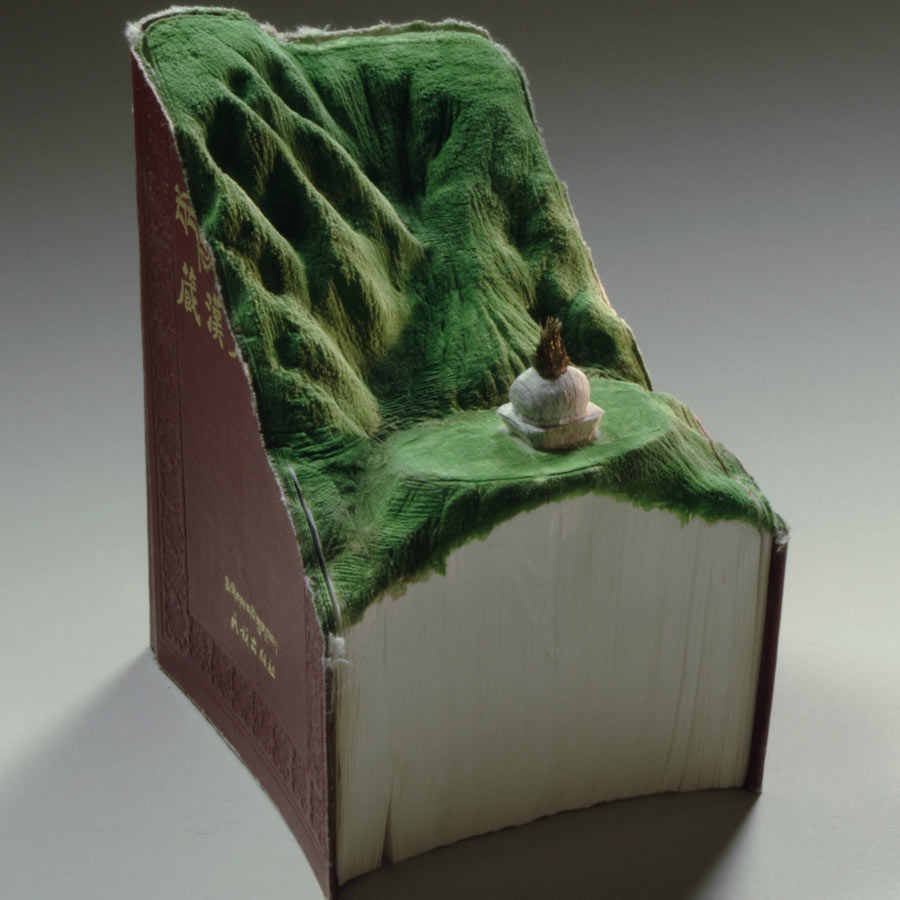


Examining evolution through the dual lens of spirituality and science, Montreal-based book sculptor Guy Laramée creates miniature landscapes from antiquated paperbacks. Drawing upon over three decades of experience as an interdisciplinary artist (including a start as a music composer) and an education in anthropology, Laramée carves out an existentialist parallel between the erosion of geography and the ephemeral nature of the printed word.
Laramée also evokes notes of nostalgia and the passing of time with his paintings of clouds and fog. A self-professed anachronist, Laramée takes inspirational cues from the age of Romanticism and the transcendentalism of Zen, exploring “not only what we think, but that we think.” Laramée’s distinct, conceptual medium and thematic study of change has involved him in such contemplative projects as the “Otherworldly” exhibition at the Museum of Arts and Design and an impromptu collaboration with WIRED UK.
We caught up with Laramée during his recent exhibition, “Attacher les roches aux nuages” or “Tying Rocks to Clouds”, at Expression: Centre d’exposition de Saint-Hyacinte in Quebec, to learn more about his process and philosophy.
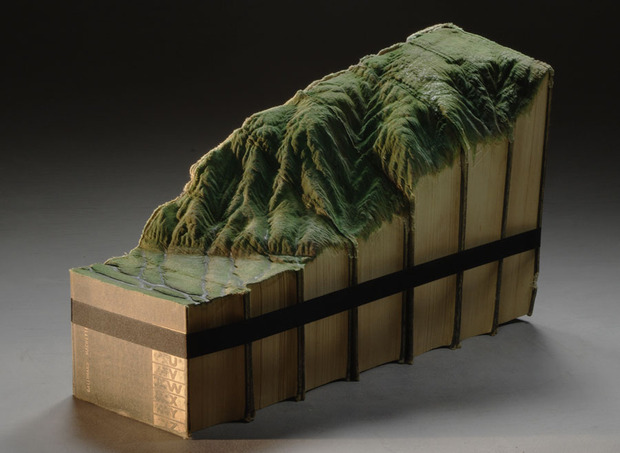
What inspired the ideas for your book sculptures and what is the process that is involved in creating them?
The bookwork came in the alignment of three things: a casual discovery, my undertaking of an MA in anthropology and the building of La Grande Bibliothèque du Québec. The undertaking of this grand library fascinated me because at that time (2000) I thought that the myth of the encyclopedia—having all of humanity’s knowledge at the same place—was long dead. I was, myself, going back to school to make sense of 15 years of professional practice and was, once more, confronted with my love/hate relationship with words. Then came this accident, so to speak. I was working in a metal shop, having received a commission for a theater set. In a corner of the shop was a sandblaster cabinet. Suddenly, I had the stupid idea of putting a book in there. And that was it. Within seconds, the whole project unfolded.


Please tell us a bit about your collaboration with Wired UK and creation of the Black Tides project.
Tom Cheshire, one of the associate editors of WIRED, wrote me one day, saying that he loved my work and inquiring about my future projects. Off the top of my head and half jokingly, I told him that I had the idea of doing a piece with a pile of their magazines (that was not true). He picked up on the idea and suddenly, a pile of magazines was being shipped to my studio. I had had a lot of offers for commissions—all involving my work with books—and I refused them all because they all made me so sad. People were trying to use my work to fit their agendas but the collaboration with WIRED truly inspired me because it fit perfectly with a project I had on my bench for a while, and for which I had found no outlet. The Great Black Tides project is the continuation of The Great Wall project. It gives flesh to a short story written in the mode of an archeology of the future.
The first piece that came out of this project is WIRELAND. It is both ironic and beyond irony. It is ironic that a high-tech magazine would include such a low-tech work in their pages—and foremost a type of work that looks so critically at the ideologies of progress. And it is beyond irony even, because the piece is beautiful. It is beautiful for mysterious reasons but I like to think that the way Tom Cheshire trusted me was a big factor in the success of the enterprise. So if there is a message in all this, I would like to think that it is this: never stop relating to people who defend worldviews, which seem to contradict yours. There is a common factor beyond all points of view.
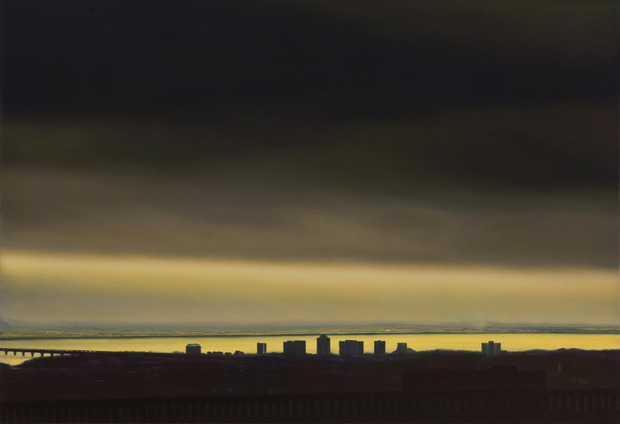
In addition to your sculptures, you also paint. Please tell us a bit about your painting process and what inspires your fog series.
The 19th century painter and emblematic figure of Romanticism, Caspar David Friedrich, said, “The eye and fantasy feel more attracted by nebulous distance than by that which is close and distinct in front of us.” That sums it up all very nicely. What is blurred and foggy attracts your eye because you want to know what is behind that veil. It is a dynamic prop to set you in motion.

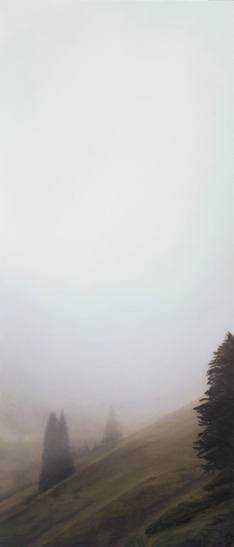
Your work frequently explores themes of the ephemeral, surreal and nostalgic. What draws you to these themes and influences them?
The Great Nostalgia is my main resource. It is not nostalgia about a lost golden age (which never existed). It is the nostalgia, here and now, of the missing half. We live between two contradictory and simultaneous worldviews: the participant and the observer. I work along the thesis that all of humanity’s joy and sorrow come out of this basic schism, something most of the great religions (Buddhism, Sufism, etc.) evoke abundantly.
My work is existential. It may depict landscapes that inspire serenity, but this is the serenity that you arrive at after traversing life crisis. You can paint a flower as a hobby, but you can also paint a flower as you come back from war. The same flower, apparently, but not really the same.
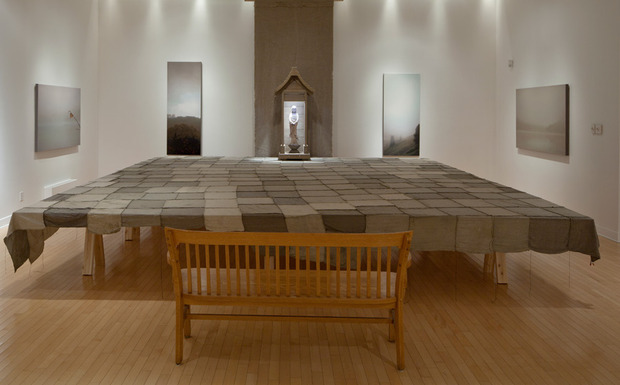
Could you please share your thoughts on the theme of the Guan Yin project and how it manifested in the exhibited pieces?
Originally the project was a commission for a local biennale here in Quebec, an event that celebrates linen. The theme of that biennale was “Touch”. I started with used rags, the ones that are used by mechanics and that are called “wipers”. I started by sowing them together without really knowing what I was doing. I was attracted to the different shades of these rags. They are all of a different grey, due to the numerous exposures to grease and the subsequent washings but meanwhile, my mother died. I was with her when she gave her last breath. Needless to say, that gave the project a totally different color.
So, I decided that this project would help me pass through the mourning of this loss. I decided against all reason—you don’t do that in contemporary art— that I would carve a statue of Guan Yin, the Chinese name for the Bodhisattva of compassion in Buddhist lore. It took me four months. I had never carved a statue in wood. Finally, the statue came out of a syncretic version of the original. It is still faithful to one of the avatars of these icons but there is a bit of the Virgin Mary in there. Then, I built an altar over the statue and put the altar on this 16×16 feet tablecloth made of 500 used rags. The piece was first shown in an historic Catholic church which was almost a statement about the possibility of an inter-faith dialogue—even if that was far from my concern at the time when I put it up there. To me, these rags, with the hands of these women over them, became the metaphor of our human condition. As a Japanese proverb says, “The best words are the ones you did not say.”
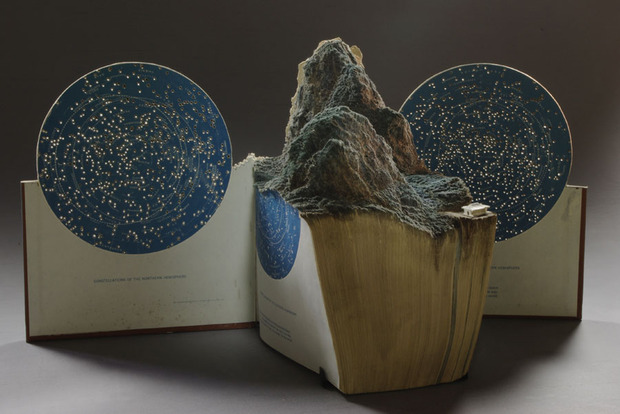
“Attacher les roches aux nuages” will run through 12 August 2012 at the Centre d’exposition de Saint-Hyacinte.
Centre d’exposition de Saint-Hyacinte
495, Avenue Saint-Simon
Saint-Hyacinthe (Quebec), J2S 5C3









